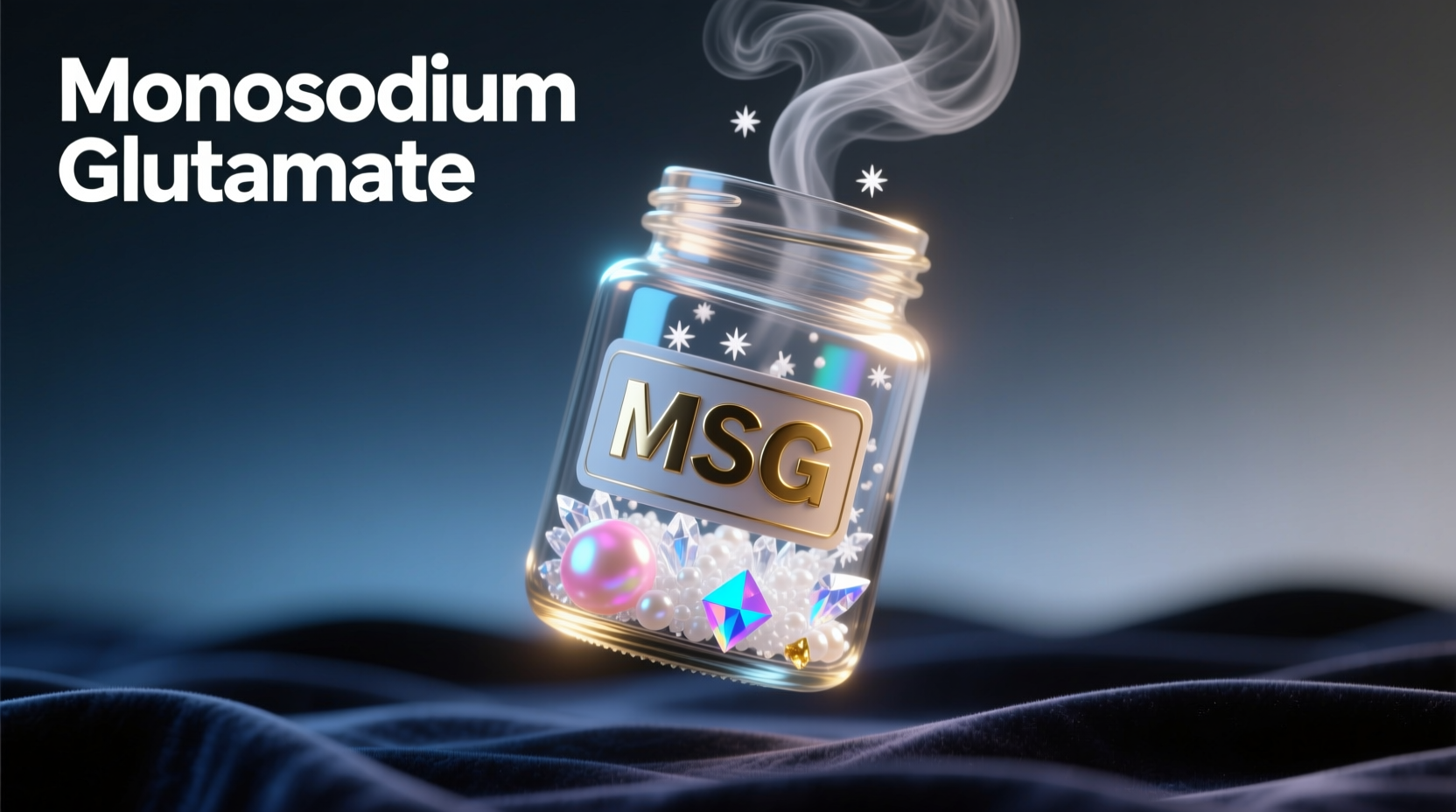MSG has a subtle savory taste known as umami, which enhances other flavors without overpowering them. Unlike salt, it doesn't taste salty on its own but creates a rounded, satisfying mouthfeel that makes foods taste more complete and delicious. Scientific studies confirm that MSG specifically activates umami taste receptors on your tongue, delivering that "something's missing" flavor satisfaction you experience in perfectly seasoned dishes.
When you sprinkle MSG on your food, you're not adding a strong flavor of its own. Instead, you're activating one of the five basic tastes recognized by science—umami. This "savory" sensation makes dishes taste more robust and satisfying without introducing any distinct flavor of its own. Many home cooks and professional chefs use MSG to elevate everyday meals, but understanding exactly what does msg taste like helps you use it effectively.
The Science Behind MSG's Flavor Profile
Monosodium glutamate (MSG) is the sodium salt of glutamic acid, an amino acid naturally present in many foods. When dissolved in food, MSG breaks down into sodium and glutamate ions. The glutamate binds specifically to umami taste receptors on your tongue, triggering that distinctive savory sensation.
According to research published in the Journal of Nutrition, "glutamate in MSG activates the same taste receptors as naturally occurring glutamate in foods like tomatoes, cheese, and mushrooms." This explains why MSG doesn't have an overpowering taste of its own—it's simply delivering more of a compound already present in many delicious foods.
| Compound | Glutamate Content (per 100g) | Primary Taste Contribution |
|---|---|---|
| Pure MSG | 78.2g | Direct umami enhancement |
| Parma Ham | 1.4g | Savory, salty complexity |
| Ripe Tomatoes | 0.25g | Bright, acidic umami |
| Aged Cheddar | 1.1g | Rich, complex umami |
MSG's Taste Journey: What to Expect When You Use It
When you first taste pure MSG (which isn't recommended as it's meant to be used in cooking), you'll notice a subtle savory quality without strong saltiness. The real magic happens when MSG interacts with other ingredients:
- Initial contact: A mild savory sensation, almost like a whisper of meatiness
- Mid-palate: Enhanced perception of other flavors already present in the dish
- Finish: A satisfying, lingering savory note that makes the food feel more complete
This progression explains why many people searching for what does msg taste like in food describe it as making dishes taste "more like themselves"—it doesn't add a new flavor but amplifies existing ones.

MSG Through Time: A Flavor Evolution
The story of MSG's acceptance reveals much about how we perceive its taste:
1908: Japanese chemist Kikunae Ikeda isolates glutamate from kombu seaweed and identifies umami as the fifth basic taste
1940s-1950s: MSG becomes widely used in processed foods and restaurant cooking, particularly in Asian cuisine
1968: The term "Chinese Restaurant Syndrome" appears, creating misconceptions about MSG's effects (though scientific studies later disproved most claims)
Where MSG Works Best (And Where It Doesn't)
Understanding what does msg taste like in different dishes requires knowing its limitations. MSG enhances savory dishes but has little effect on sweet foods. It works best in:
- Broths and soups (adds depth without additional salt)
- Meat dishes (enhances natural meaty flavors)
- Vegetable preparations (especially tomatoes, mushrooms, and aged cheeses)
- Sauces and gravies (creates more rounded flavor profiles)
MSG has minimal impact on:
- Sweet desserts
- Fruit-based dishes
- Fresh salads without savory components
According to flavor research from the Monell Chemical Senses Center, "MSG's flavor-enhancing properties are most noticeable in foods with existing umami compounds, creating a synergistic effect that can reduce sodium content by up to 20% while maintaining perceived saltiness." This makes it valuable for creating satisfying dishes with less overall sodium.
Common Misconceptions About MSG's Taste
Many people searching for what does msg taste like compared to salt expect it to be similar, but they're fundamentally different:
- Myth: MSG tastes strongly salty
Fact: MSG contains about one-third the sodium of table salt and doesn't primarily register as salty - Myth: MSG has a distinctive artificial flavor
Fact: When used properly, MSG is undetectable as a separate flavor—it simply makes existing flavors more pronounced - Myth: MSG overpowers other ingredients
Fact: Proper usage (typically 1/4 teaspoon per pound of food) enhances without dominating
Practical Tips for Using MSG Effectively
To experience what does msg taste like when used correctly, follow these professional chef recommendations:
- Start with small amounts—1/8 to 1/4 teaspoon per serving
- Add MSG early in the cooking process to allow full integration
- Reduce regular salt by 20% when using MSG for balanced sodium levels
- Combine with natural umami sources like tomatoes, mushrooms, or Parmesan for synergistic effects
- Avoid using MSG in sweet dishes where umami isn't appropriate
Professional chefs often use MSG to fix dishes that feel "flat" or incomplete. As Chef Kenji López-Alt explains in The Food Lab, "MSG isn't a flavor itself—it's a flavor amplifier. It's like turning up the volume on the inherent deliciousness of your ingredients."
Experiencing MSG for Yourself: A Simple Test
To truly understand what does msg taste like in cooking, try this experiment:
- Prepare two identical bowls of clear broth (chicken or vegetable)
- Add 1/8 teaspoon MSG to one bowl, leaving the other plain
- Taste both broths side by side
You'll likely notice that the MSG-enhanced broth tastes richer, more satisfying, and somehow "more broth-like" without any distinct new flavor. This demonstrates MSG's true function as a flavor enhancer rather than a flavor of its own.
Final Thoughts on MSG's Taste Profile
Understanding what MSG actually tastes like helps dispel many myths surrounding this common ingredient. It doesn't have a strong, distinctive flavor of its own but works subtly to enhance the natural deliciousness of foods. When used properly, what does msg taste like becomes irrelevant because you're not tasting MSG—you're tasting your food, but better.











 浙公网安备
33010002000092号
浙公网安备
33010002000092号 浙B2-20120091-4
浙B2-20120091-4